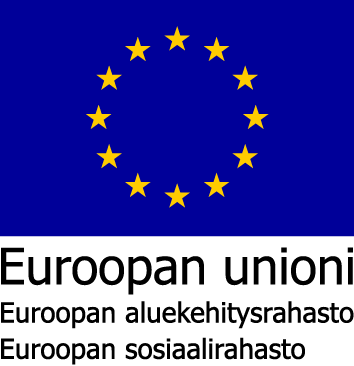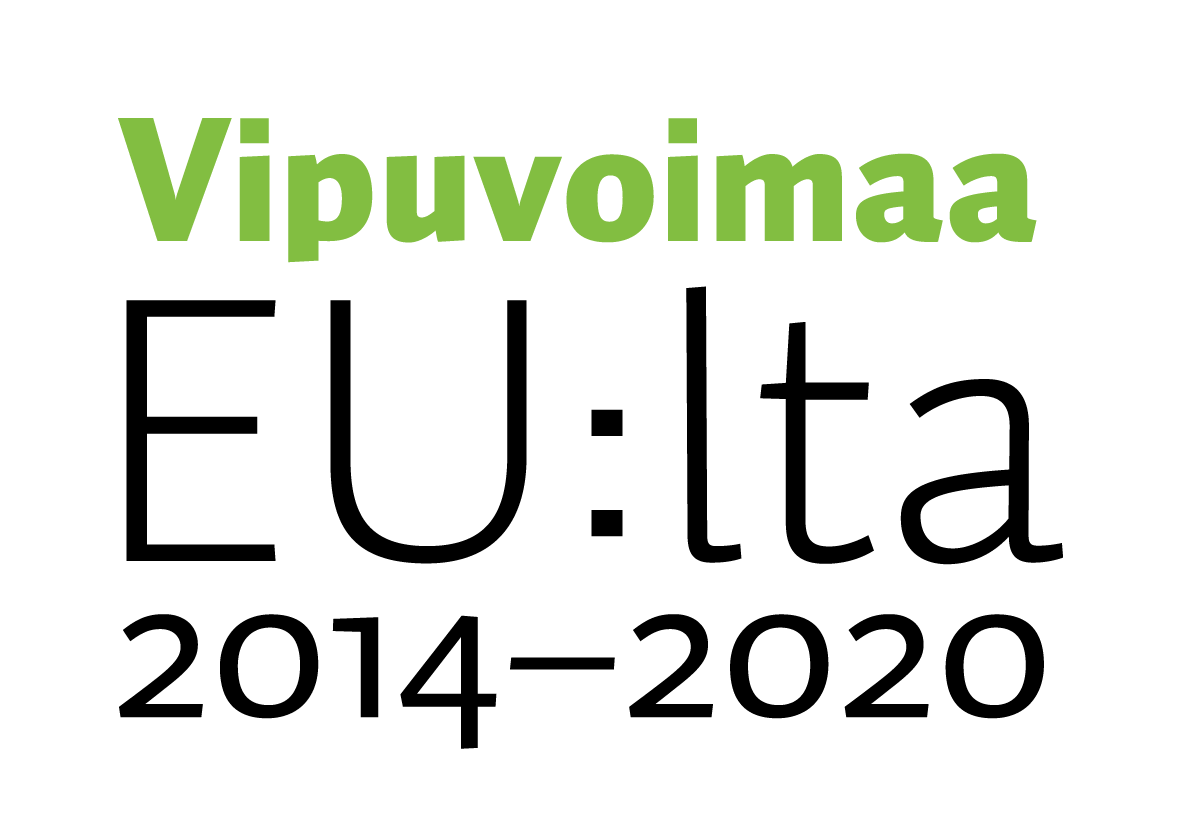

 |
 |
Hankekoodi: S21794
Hankkeen nimi: Peili
Toimintalinja: 3. Työllisyys ja työvoiman liikkuvuus
Erityistavoite: 6.1. Nuorten ja muiden heikossa työmarkkina-asemassa olevien työllistymisen edistäminen
Suunnitelman mukainen toteutusaika: Alkaa 1.9.2019 ja päättyy 31.12.2022
Toiminnan tila: Toiminta päättynyt
Vastuuviranomainen: Pohjois-Pohjanmaan elinkeino-, liikenne- ja ympäristökeskus
Hakijan virallinen nimi: Raahen kaupunki
Organisaatiotyyppi: Kunta
Y-tunnus: 1791817-6
Jakeluosoite: PL62
Puhelinnumero: 040 830 3018
Postinumero: 92101
Postitoimipaikka: Raahe
WWW-osoite: https://www.raahenseudunkehitys.fi/
Hankkeen yhteyshenkilön nimi: Tarja Limingoja
Yhteyshenkilön asema hakijaorganisaatiossa: Projektipäällikkö
Yhteyshenkilön sähköpostisoite: tarja.limingoja(at)raahe.fi
Yhteyshenkilön puhelinnumero: +358 40 130 8234
Hakijoiden lukumäärä tai tuen siirto -menettely:
Hankkeessa kehitetään uudentyyppinen ja innovatiivinen osaavan työvoiman saatavuuden parantamiseen sekä työllisyyden ja kuntien elinvoimaisuuden edistämiseen tähtäävä Peili-toimintamalli. Toimintamallilla pyritään tarjoamaan työttömille ja työttömyysuhan alaisille henkilöille uusia väyliä työllistymiseen sekä vastaamaan hankkeen toiminta-alueella olevien ja sinne saapuvien yritysten osaavan työvoiman tarpeisiin.
Hankkeen uutuusarvo on Peili-toimintamalliin sisältyvä ennennäkemättömän tiivis ja strukturoitu yhteistyö eri toimijoiden kanssa sekä proaktiivinen ote, jolla pyritään helpottamaan alueella toimivien yritysten osaavan työvoiman saantia ja edistämään alueella olevien ja alueelle saapuvien työttömien, työttömyysuhan alla olevien tai muutoin heikossa työmarkkina-asemassa olevien henkilöiden työllistymistä ja sijoittumista muiden työllistymistä edistävien palvelujen piiriin. Pitkällä aikavälillä hankkeen toimenpiteillä vaikutetaan alueen muuttotaseen vahvistamiseen ja positiivisen aluekehitykseen. Hankkeella pyritään paitsi osaavan työvoiman saatavuuden parantamiseen ja työllisyyden edistämiseen myös toiminta-alueen vetovoimaisuuden kehittämiseen kokonaisvaltaisesti.
Hankkeen tavoitteena on
1. kehittää uudenlainen monistettava ja skaalattava toimintamalli sekä pilotoida ratkaisuja työvoiman saatavuuden turvaamiseksi,
2. parantaa osaavan työvoiman saatavuutta,
3. edistää työllisyyttä sekä parantaa työttömyysuhan alaisten ja heikossa työmarkkina-asemassa olevien ihmisten mahdollisuuksia,
4. edistää elinvoiman ja elinkeinorakenteen kestävää kehitystä,
5. lisätä toiminta-alueen tunnettuutta, vetovoimaisuutta, houkuttelevuutta ja kilpailukykyä niin kansallisella kuin kansainvälisellä tasolla,
6. edistää alueella pendelöivien ja muuttoa suunnittelevien sekä heidän läheistensä pysyväisluontoista muuttoaktiivisuutta,
7. myötävaikuttaa toiminta- ja toteutusalueen kuntien asukasmäärän kehitykseen positiivisesti ja
8. rakentaa Pohjois-Pohjanmaan eteläosaan pysyvä ja kattava sekä yksityisen että julkisen sektorin toimijat käsittävä HR-henkilöiden verkosto ja koordinoida sen toimintaa.
Toimintamalli on monistettavissa, skaalattavissa sekä maantieteellisestä sijainnista ja toimialasta riippumaton, joten hankkeessa aikaansaadut kvalitatiiviset tulokset ja kokemukset mallin toteuttamisesta ja toimivuudesta tarjotaan eri seutujen sekä kaupunkien ja kuntien hyödynnettäväksi ja edelleen kehitettäväksi.
Hankeen varsinaiseen kohderyhmään kuuluvat työttömät, työttömyysuhan alaiset ja heikossa työmarkkina-asemassa olevat ihmiset. Hankkeen kohderyhmään kuuluvat myös työelämässä olevat ihmiset, joiden työvoimapoliittinen status on vaarassa heikentyä. Kohderyhmään kuuluvat ihmiset voivat asua, pendelöidä tai suunnitella muuttoa hankkeen toteutusalueelle.
Hankkeen toimenpiteiden kohderyhmään kuuluvat myös alueella toimivat ja alueelle tulevat yritykset, yhdistykset ja julkinen sektori sekä työnantajat ja työllistämiseen liittyvien palvelujen tarjoajat.
Hankkeen toiminnasta hyötyvät suoraan tai välillisesti toiminta- ja toteutusalueen kunnat, viranomaiset, yritykset ja yhdistykset sekä muut alueella asuvat ihmiset.
Myönnetty EU- ja valtion rahoitus: 309 928
Toteutunut EU- ja valtion rahoitus: 300 031
Suunniteltu julkinen rahoitus yhteensä: 357 414
Toteutunut julkinen rahoitus yhteensä: 346 793
Maakunnat: Pohjois-Pohjanmaa
Seutukunnat: Raahen, Ylivieskan
Kunnat: Raahe, Alavieska, Siikajoki, Kalajoki, Oulainen, Merijärvi, Pyhäjoki
Jakeluosoite:
Postinumero:
Postitoimipaikka:
Suunniteltu: 22
Toteutunut seurantatietojen mukaan: 40
Suunniteltu: 105
| Välitön | Välillinen | |
| Ekologinen kestävyys | ||
| Luonnonvarojen käytön kestävyys | 0 | 1 |
| Hankkeessa tehtävillä toimenpiteillä on välillisiä vaikutuksia pendelöinnin vähentämiseksi. | ||
| Ilmastonmuutoksen aiheuttamien riskien vähentäminen | 0 | 0 |
| Ei vaikutuksia | ||
| Kasvillisuus, eliöt ja luonnon monimuotoisuus | 0 | 0 |
| Ei vaikutuksia | ||
| Pinta- ja pohjavedet, maaperä sekä ilma (ja kasvihuonekaasujen väheneminen) | 0 | 1 |
| Hankkeessa tehtävillä toimenpiteillä on välillisiä vaikutuksia pendelöinnin vähentämiseksi. | ||
| Natura 2000 -ohjelman kohteet | 0 | 0 |
| Ei vaikutuksia | ||
| Taloudellinen kestävyys | ||
| Materiaalit ja jätteet | 0 | 0 |
| Ei vaikutuksia | ||
| Uusiutuvien energialähteiden käyttö | 0 | 0 |
| Ei vaikutuksia | ||
| Paikallisen elinkeinorakenteen kestävä kehittäminen | 1 | 5 |
| Hankkeessa tehtävien toimenpiteiden myötä alueelle saadaan uutta osaavaa työvoimaa, edistetään työllisyyttä. Siten alueen yrityksillä on mahdollisuus kasvaa ja kehittyä ja vaikuttaa elinkeinorakenteen kestävään kehittymiseen. | ||
| Aineettomien tuotteiden ja palvelujen kehittäminen | 5 | 3 |
| Hankkeessa kehitettään uudenlainen, monistettavissa sekä toimialasta ja alueesta riippumaton toimintamalli, jolla vaikutetaan muiden muassa osaavan työvoiman saatavuuteen ja työllisyyden edistämiseen. | ||
| Liikkuminen ja logistiikka | 0 | 3 |
| Hankkeessa on suunniteltu tehtävän muiden muassa työvoiman muuttamiseen, liikkuvuuteen ja logistisiin ratkaisuihin vaikuttavia toimenpiteitä ja koordinaatiotyötä. | ||
| Sosiaalinen ja kulttuurinen kestävyys sekä yhdenvertaisuus | ||
| Hyvinvoinnin edistäminen | 7 | 10 |
| Hankkeessa tehtävillä toimenpiteillä edistetään osaavan työvoiman saatavuutta, työllisyyttä ja sijoittumista työmarkkina-asemaa parantavien palvelujen piiriin sekä heikossa työmarkkina-asemassa olevien mahdollisuuksia. | ||
| Tasa-arvon edistäminen | 0 | 2 |
| Hankkeessa tehtävillä toimenpiteillä saatetaan edistää kohderyhmään kuuluvien henkilöiden työvoimapoliittista tasa-arvoa. | ||
| Yhteiskunnallinen ja kulttuurinen yhdenvertaisuus | 0 | 2 |
| Hankkeessa tehtäviin toimenpiteisiin on mahdollista osallistua sukupuolesta, työvoimapoliittisesta, kulttuurillisesta tai muusta taustatekijästä riippumatta. | ||
| Kulttuuriympäristö | 0 | 0 |
| Ei vaikutuksia | ||
| Ympäristöosaaminen | 5 | 2 |
| Hankkeessa tehtävillä tiedon kartoittamiseen ja välittämiseen liittyvien toimenpiteiden avulla hankkeen kohderyhmään kuuluville tahoille tarjotaan täsmällistä ja kattavaa tietoa toimintaympäristöstä, mahdollisuuksista, palveluista, työ- ja koulutuspaikoista sekä muusta alueen tarjonnasta. | ||
Hankkeen päätavoitteena oli kehittää uudentyyppinen ja innovatiivinen osaavan työvoiman saatavuuden parantamiseen sekä työllisyyden ja kuntien elinvoimaisuuden edistämiseen tähtäävä Peili-toimintamalli.
Toimenpiteiden avulla on pyritty parantamaan alueen yritysten osaavan työvoiman saatavuutta ja edistämään työllisyyttä sekä vaikuttamaan positiivisella tavalla elinkeinorakenteen monipuolistumiseen, asukasmäärän ja elinvoiman kehittymiseen kestävästi pitkällä aikavälillä. Hankkeen toiminnan tavoitteena on ollut myös toiminta-alueen tunnettuuden, vetovoimaisuuden, houkuttelevuuden ja kilpailukyvyn kehittyminen niin kansallisella kuin kansainvälisellä tasolla. Alueen tarjonta ja mahdollisuudet haluttiin tehdä näkyväksi, yhden luukun periaatteen mukaisesti toimivaksi rajapinnaksi, yritysten, kuntatoimijoiden, kuntien palvelujen, eri hallintokuntien ja viranomaisten sekä hankkeen kohderyhmiin kuuluvien henkilöiden ja muiden tahojen välille.
Yhtenä merkittävänä toimenpiteenä hankkeessa on ollut rakentaa hankealueelle yksityisen ja julkisen sektorin toimijoiden muodostama pysyvä ja kattava HR- verkosto ja koordinoida sen toimintaa. Tavoitteena on, että verkostosta muodostuu pysyvä toimintamalli, joka jatkaa toimintaansa päättymisen hankkeen jälkeenkin. HR-verkostossa tieto liikkuu ketterästi eri toimijoiden välillä, yhteistyössä ideoidaan ja kehitetään uusia toimenpiteitä työvoiman saatavuuden edistämiseksi, lähennetään yritysten ja oppilaitosten yhteistyötä, millä voidaan vastata tulevaisuuden työvoiman koulutustarpeisiin.
Hankkeessa rakennettiin HR-verkosto, jossa on jäsenenä toimijoita elinkeinoelämän eri alueilta. Mukana verkostossa on suuri joukko (n. 50 jäsentä) yritysten, kuntien palveluiden, oppilaitosten, viranomaisten ja suurhanketoimijoiden edustajia. HR-verkosto kokoontuu säännöllisesti muutaman kerran vuodessa. Verkostossa on yhteistyössä suunniteltu uusia ratkaisuja työllisyyden lisäämiseksi ja osaavan työvoiman saamiseksi yrityksiin ja pohdittu miten edelleen kehittää olemassa olevia ratkaisuja työllistymisen edistämiseksi. Tähän liittyen hanke on esimerkiksi aktivoinut HR-verkoston yritysjäseniä hyödyntämään työvoiman hankkimiseen kehitettyjä digitaalisia ratkaisuja, esitellyt erilaisia koulutuksellisia vaihtoehtoja osaavan työvoiman saamiseksi ja mahdollistanut monipuolisten pysyvien kontaktiverkostojen muodostumisen sekä lisännyt alueellista yhteistyötä.
Hanke on edistänyt alueen tunnettuutta, houkuttelevuutta ja vetovoimaisuutta kansallisesti ja kansainvälisesti. Hankealueen kuntia ja niiden tarjoamia mahdollisuuksia esittelemään on Peili-hankkeen koordinoimana hankittu laadukas Power Corner Finland -verkkosivusto (https://powercorner.fi/). Sivustolla esitellään Siikajoen, Raahen, Pyhäjoen, Oulaisten, Kalajoen, Alavieskan ja Merijärven alueet, alueiden päätoimialat, avoinna olevat työpaikat sekä vapaa-ajanviettomahdollisuudet. Sivustoilla ovat tiedot esillä suomen, englannin ja venäjän kielisinä versioina. Verkkosivuston tavoitteena on kuvata aluetta yhtenäisenä talousalueena ja jakaa tietoa alueen tarjoamista mahdollisuuksista mahdollisimman laajasti sekä myötävaikuttaa toiminta-alueen kuntien asukasmäärän kehitykseen positiivisesti.
Hanke on jatkokehittänyt palvelukonsepteja helpottamaan suurhankkeiden myötä alueelle siirtyvien työntekijöiden ja yritysten asettautumista paikkakunnille. Hankkeen toimesta valmisteltu palvelukoordinaattori-konsepti, jossa kysymys on kohdepaikkakunnalla, paikan päällä olevasta henkilöstä, joka palvelee ja auttaa yrityksiä ja työntekijöitä alueelle asettautumisen erilaisissa ongelmissa. Valmis konseptimalli on käyttöön otettavissa ja sovellettavissa mihin tahansa suurhankkeeseen. Lisäksi alueelle siirtyville suurhankkeiden tai yritysten työntekijöille on tarjottu mahdollisuuksia etukäteen tutustua alueeseen PopUp-toimistomallilla, jossa esitellään kohdealueen palvelutarjontaa, aluetta ja sen tarjoamia mahdollisuuksia. Mallissa siirrytään jakamaan tietoa paikan päälle lähtöalueelle sinne, missä tiedontarve kulloinkin on. Näin pyritään alentamaan muuttamisen kynnystä, edistämään puolisotyöpaikkojen löytymistä ja näin helpottamaan yritysten etabloitumista hankealueelle.
Hanke on ollut osana joukkoliikennetyöryhmää kehittämässä lähialueen julkisia liikenneyhteyksiä, mikä osaltaan edistää muuttohalukkuutta Peili-kuntiin ja lisää alueen elinvoimaa. Lisähyötynä hyvistä julkisista liikenneyhteyksistä on pendelöivien kulkuneuvojen määrän vähentyminen, mikä pienentää työmatkaliikenteen aiheuttamaa ympäristökuormaa. Lisäksi hanke on osallistunut erilaisiin Hanhikivityöryhmiin, joissa on jaettu muun muassa viranomaistietoa suurhanketoimijoille ja myös saatu esille tietoa suurhankkeen myötä kasvavista palvelutarpeista edistämään alueen palvelutoimijoiden tarjonnan kehittämistyötä.
Hanke on järjestänyt tilaisuuksia, joissa on kohtautettu alueen työttömiä työnhakijoita, työttömyysuhan alaisia sekä työpaikan tai alan vaihtoa suunnittelevia ihmisiä sekä opiskelijoita osaajia etsiviin yrityksiin sekä oppilaitoksiin. Lisäksi on kohtautettu yrityksiä ja oppilaitoksia koulutustarpeen ja -tarjonnan kartoittamiseksi ja kehittämiseksi.
Toimenpiteiden myötä on saatu aikaan pysyvä toimintamalli, jonka avulla kehitetään alueen elinvoimaa, osaavan työvoiman saamista, työllistymisen edistämistä ja tunnettuuden sekä vetovoimaisuuden edistämistä entistä laajemmalla ja tiiviimmällä yhteistyöllä ja leveämmillä hartioilla. Mukaan on saatu laaja joukko kuntia, yrityksiä, oppilaitoksia, viranomaisia sekä muita asiantuntijoita, joiden osaamista, verkostoja ja näkemyksiä voidaan hyödyntää yhteisessä kehittämistyössä.